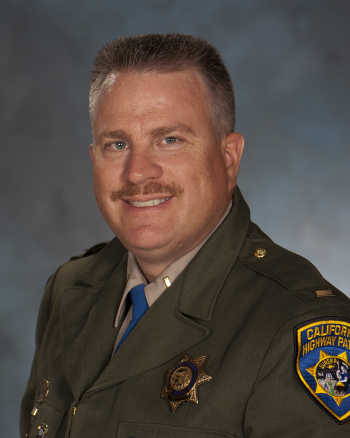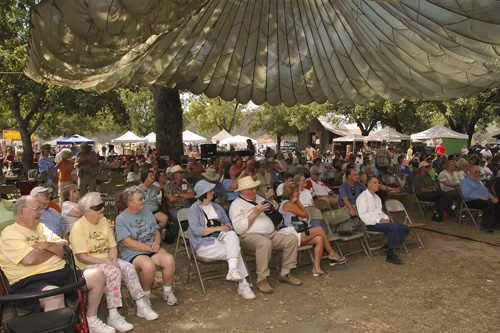
Watermelon is a nutritious summer favorite. Photo courtesy of the National Watermelon Promotion Board.
Since watermelon is a big player at summer picnics and backyard barbecues, it seems the perfect topic for Labor Day weekend.
No doubt many readers will enjoy its pink, juicy fleshiness during summer’s last hurrah, and I’ll be among them.
The watermelons of my childhood in the 1960s and 1970s were a different animal than most seen in today’s markets.
The huge and heavy deep green beauties of days gone by were only available in the summer and were chock full of slippery black seeds. The seeds were so plentiful, in fact, that they might’ve hindered one’s enjoyment of the sweet flesh, had they not been so fun to spit.
My first memory of eating watermelon was during a summer picnic in upstate New York when I was about 4 or 5 years old. The blissful juiciness of that experience landed watermelon on the top of my list of favorite foods for years afterward. It almost eclipsed the pony rides at the picnic, but not quite.
Today there are more than 1,200 varieties of watermelon, ranging in weight from less than a pound to more than 200 pounds, with flesh in colors that range from pink to red to orange, yellow or white. More and more seedless varieties appear on the market each year.
The world record weight for a watermelon is a bulky 262 pounds, grown by a Tennessee farmer in 1990. Extra large watermelons at 200 pounds resemble the bodies of mid-sized pigs. At 60 pounds plus that, it would seem granddaddy hog entered the room.
The always-clever Japanese have devised a way to create square watermelons by growing them in glass boxes, where the fruits naturally assume that shape. They may be convenient for stacking on supermarket shelves, but the hefty price tag – about the equivalent of $83 in U.S. dollars in Japan – keeps most consumers away. They’re typically bought as a novelty.
Pyramid-shaped watermelons have also been developed, and any polyhedron (a geometric shape with flat faces and straight edges) may be used to fashion them as they grow.
While they’re not polyhedrons, I’ve seen photos of heart-shaped watermelons in Japanese stores.
The shape, bright skin, thick rind and beautiful flesh of these melons make them perfect for artful carving, and the intricacies of the craft are amazing. From baskets for melon balls to exquisite details in complex floral patterns, the handiwork is available for viewing via a Google search online.
Watermelon is thought to be native to southern Africa, and famed Victorian era explorer David Livingstone reported that watermelon grew abundantly in the Kalahari Desert of that region.
In a land named for its lack of water (Kalahari is derived from Tswana words meaning “great thirst” and “waterless place”), the 92 percent water content in watermelon becomes a life-giving boon for denizens of that arid land.
Watermelon reaches maximum genetic density in southern Africa, with all its forms, sweet, bland and bitter, found growing in the wild there.
It was first cultivated on the opposite end of the African continent, in the north, where the fertile Nile valley was home to the watermelon farms of ancient Egypt.
Records indicate that watermelons were cultivated there from at least as early as the second millennium B.C. It was a popular fruit in that culture, evidenced by the watermelon seeds found in Pharaoh Tutankhamun’s tomb.
Watermelons have reportedly been grown in the U.S. since the 1500s, when French explorers saw American Indians cultivating them in Mississippi. Others put the first watermelon arrival in the U.S. about 100 years later, when they were brought by boat to Massachusetts.
However and whenever they got here, they were brought to our shores by European explorers, as well as African slaves.
They arrived in Europe via the Moor invasion in the 1200s, with the word “watermelon” making its way into English dictionaries by the year 1615, and they’ve been cultivated in Asia since the 9th century A.D.
Pickled watermelon rind is a tradition in the southern U.S., but it's also been popular in Chinese cuisine for centuries, where it's used in appetizers and stir fried dishes.
Choosing a good watermelon can be a mysterious process, as one can’t choose “by nose” as with other melons. They don’t emit a smell when ripe, nor do they ripen off the vine, as cantaloupes do. Here are some tips:
First, look for a symmetrical watermelon free of bruises or cuts.
Second, lift it. If it feels heavy for its size, that’s good.
Third, turn it over and check for the “ground spot.” The bottom should reveal a creamy yellow spot from where it sat on the ground and ripened in the sun. The more yellow the spot, the longer it was allowed to ripen in the field. If there is no spot, or if it’s white or pale green, it was picked prior to maturity.
Some people thump on melons to check for a hollow sound, which they claim indicates a ripe melon. It’s an unproven method, but I do it anyway, maybe just because I like hearing the differing tonal thumps and knocks of makeshift watermelon drums.
Watermelons are in season and stacked high in local stores now. I’d suggest bringing home a couple of them, one to slice and eat fresh, and the other to experiment with in the kitchen. From salsas and salads to main dishes and desserts, there are some very creative ways to use them.
I’ll share some ideas of my own, but if you’d like other inspiration, visit www.watermelon.org, the National Watermelon Promotion Board.
Freeze watermelon balls or squares, then puree for instant sorbet.
Blend watermelon with cantaloupe and kiwi, and then swirl in a little plain or vanilla yogurt for a refreshing summer soup.
Watermelon is routinely served with feta cheese in the Mediterranean region. Mix it with thinly sliced red onion, feta cheese, salt, pepper and a drizzle of olive oil for an interesting salad. Or leave out the cheese and olive oil and enjoy the contrast of the melon and onions on their own.
Make a “fire and ice” salsa by mixing finely cubed watermelon and green pepper. Add some fresh lime juice, cilantro, scallions and jalapeño pepper to taste.
Grill watermelon wedges till caramelized and grill marks appear. Sprinkle a little sugar – or drizzle a little honey – on them first and finish with a variety of dressings, like basil-mint or cilantro-lime. They can be marinated in white balsamic vinegar first to enhance the sweet-sour taste.
Add a little watermelon to black bean or corn salad.
Skewer watermelon with seafood like shrimp or scallops to make kebobs.
Make watermelon “crackers and cheese” by stacking thin slices of it with Havarti cheese.
Try it spread with fresh goat cheese and sprinkled with dill.
Blend watermelon with lime, honey and mint and mix with club soda.
If watermelon’s sliced or cubed and stored sealed in the fridge, it retains its nutritional content for up to nine days, a nice thing to know if you’re preparing things ahead of time.
Watermelon is extremely nutritious, with high stores of vitamins C and A, as well as energy-producing vitamins B6 and B1. It contains very powerful antioxidants and is a good source of beta-carotene if the flesh is pink.
Like tomatoes, it’s rich in lycopene, which is known to be a cancer preventative, and its high antioxidant contents helps prevent macular degeneration.
In addition, it helps squelch the inflammation that contributes to conditions like asthma, atherosclerosis, diabetes, colon cancer, and arthritis.
Today’s recipe is a salad that includes watermelon, fresh mozzarella cheese, and purple basil; in other words, a combination of some of my favorite tastes. If purple basil is difficult to find, substitute a more easily found variety, such as Genovese basil, the type that’s typically stocked on supermarket shelves or sold at farmers’ markets. Enjoy!
Fresh mozzarella watermelon salad with purple basil
2 cups seeded watermelon balls
2 cups fresh mozzarella pieces
1 cup fresh basil (purple or green)
1 bunch scallions, trimmed and chopped
1/3 cup extra virgin olive oil
1 pinch salt
Pepper to taste
A drizzle of balsamic vinegar to taste
Toss together the watermelon, mozzarella, basil, scallions and oil.
Season with salt and pepper to taste.
Serve over a bed of baby greens with crostini on the side.
Drizzle balsamic vinegar over to taste.
Serves six to eight.
Recipe courtesy of www.watermelon.org, the National Watermelon Promotion Board.
Esther’s notes: A pinch of something denotes 1/8 teaspoon, the amount typically able to be pinched between two fingers.
The creamy texture of fresh mozzarella is very different from that of the shrink-wrapped balls of mozzarella used in lasagna or on pizza and is a beautiful contrast to bright, fresh watermelon. Tubs of fresh mozzarella can sometimes be found among the artisan cheeses in the supermarket. If formed into small balls, they’re packaged suspended in water so they hold their shape.
Esther Oertel, the “Veggie Girl,” is a culinary coach and educator and is passionate about local produce. Oertel teaches culinary classes at Chic Le Chef in Hidden Valley Lake, Calif., and The Kitchen Gallery in Lakeport, Calif., and gives private cooking lessons. She welcomes your questions and comments; e-mail her at This email address is being protected from spambots. You need JavaScript enabled to view it..
Follow Lake County News on Twitter at http://twitter.com/LakeCoNews, on Tumblr at www.lakeconews.tumblr.com, on Facebook at http://www.facebook.com/pages/Lake-County-News/143156775604?ref=mf and on YouTube at http://www.youtube.com/user/LakeCoNews.

 How to resolve AdBlock issue?
How to resolve AdBlock issue? 










